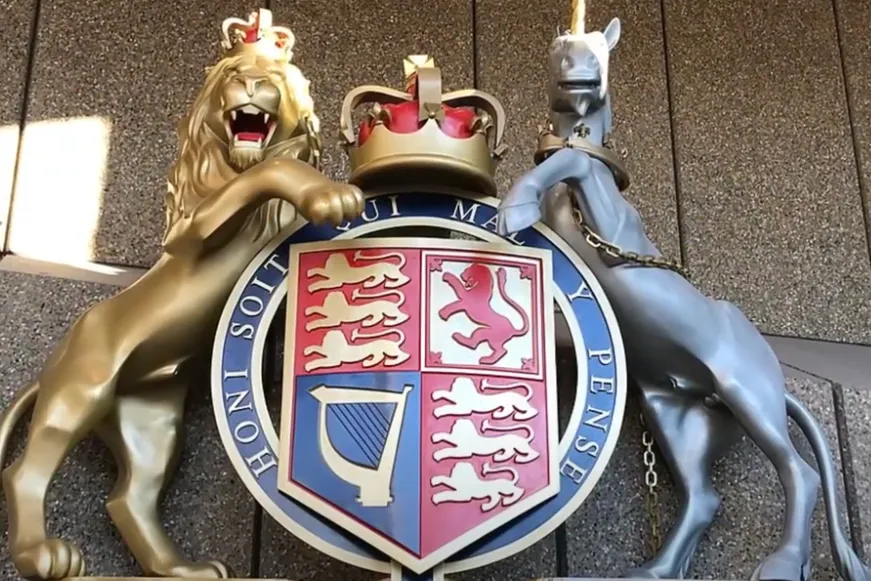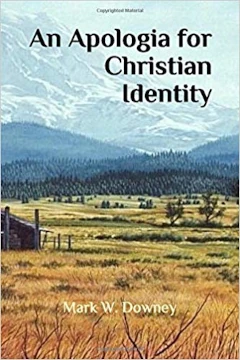Little Known Facts About the Antebellum South
by Jim Jester
Virginia was the first state to outlaw the African slave trade in 1778 (10 years before Massachusetts and 30 years before England).
The Constitution of the Confederate States of America made the first clear prohibition against slave trade, not the Constitution of the United States.
Not all blacks in the South were slaves. Some were indentured servants and had certain rights and a specified duration of service. About ten percent of blacks in the Upper South were free and made their living as laborers or small tradesmen. Less than two percent of blacks in the Deep South were free, but they tended to be rich and owned slaves themselves. There were 3.5 million Negroes in the South; some had been there as early as 1526. Even after the Emancipation Proclamation, most servants (95%) stayed with their owners rather than flee north through the Underground Railroad.
Most Americans did not own slaves. Families in the North who owned slaves were only a few percentage points less than families of the South. According to the 1860 Census, only 4.8% of Southerners owned slaves, 95.2 did not. In the same year there were only 2,300 Aristocratic Planters (those who owned 100 or more slaves), just .03 percent of the total white population, while only 8,000 owned as many as fifty slaves (.11 percent). Of the total white Southern population, just 46,000 individuals met the criteria for actual planter status (owning large acreage and twenty or more slaves), a mere .06 percent of the population. With only around five percent of Southern whites as slave owners, what about the other 95 percent? They were just poor farmers who operated without servants and had no interest in the institution of slavery.
The South had already begun to end slavery. In 1817 a group of prominent white Virginians organized the American Colonization Society, which proposed a gradual freeing of slaves, with masters receiving compensation. The liberated blacks would be transported out of the country and helped to establish a new society of their own. Funding came from private donors, some from Congress, some from the legislatures of Virginia and Maryland. Several groups of blacks were taken to the west coast of Africa, where in 1830 they established the nation of Liberia (named from the word liberation). In 1846, Liberia became an independent black republic, with its capital, Monrovia, named after the American president who presided over the initial settlement. In 1860, the CSA issued a decree that said all slaveholders had to give their slaves the option of being deported. At the beginning of the war, the South issued emancipation but the US government overshadowed it with its own.
The abolition movement began in the South. However, their version of ending slavery was not as extreme and unreasonable as the North’s version, which did not offer any compensation to owners for the loss of their slaves. Additionally, the people of the South, as others, did not like being told what to do, how to do it, or when to do it. The attitude of the South changed greatly after the Nat Turner Rebellion of 1831. Some sixty whites, most of them abolitionists and non-slave owners were butchered in their sleep (not even babies were spared). The unremorseful Turner and his racist madmen were all caught within a few weeks and hanged. If Turner was trying to end slavery, he had done the worst thing possible – his “rebellion” not only did not advance the cause of African-Americans, it actually reversed it. In its aftermath at least 100 blacks were killed, horrified whites passed new and harsh slave codes, and abolitionist sentiment, once strong across the South, was considerably dampened for decades afterward. This was a revolutionary change in the attitude for white Southerners, who had for so long considered their black servants and other free blacks as “family” and fellow citizens of Dixie. Thus while nearly every Southerner had once been an abolitionist, after 1831 the idea of emancipation was considered too dangerous, and blacks everywhere, bond or free, began to be viewed with suspicion. As radical abolitionists, such as William Lloyd Garrison and Harriet Beecher Stowe, made their continued attacks against Dixie, the Southerners dug in their heels and built up a defensive wall of resentment and fear. No one, especially Yankees, would tell them what to do, especially when the lives of their families were at stake. How and when would the South end slavery? That was her decision, as the U.S. Constitution clearly affirmed.
Black bondage in the South was not true slavery. According to Edward Pollard, the editor of the Richmond Examiner during the war, there never was such a thing as “slavery” in the Old South. It was actually a “well-guarded and moderate system of negro servitude.” The first blacks brought to North America (in 1619) were not regarded as slaves, but as indentured servants, laborers with the same rights as white indentured servants. Most Southerners called them servants unlike the Northerners who called them slaves. A slave is under the control and ownership of another, works without pay, has almost no rights, cannot purchase freedom, and often serves for life. Servitude, on the other hand, is for a limited duration, is not owned, is paid a wage, may work for others, possess a variety of personal and civil rights, and have the power to buy their freedom. These rights, and many others, were protected by statute in all of the Southern states.
There were thousands of Black slave owners in early America. In the Deep South alone, some 1,500 free blacks owned nearly 8,000 slaves. In Charleston, South Carolina, between 1820 and 1840, 75 percent of the city’s free blacks owned slaves. Furthermore, a stunning 25 percent of all free American blacks (South and North) owned slaves. In 1861, the South’s 300,000 white slave owners made up only 1 percent of the total U.S. white population of 30,000,000 people. Thus, while only one Southern white out of every 300,000 owned slaves (1%), one Southern black out of every four owned slaves (25%). In other words, far more blacks owned black (and sometimes white) slaves than whites did! The well-known Anna Kingsley, who began life as a slave in her native Africa, ended up in what is now Jacksonville, Florida, where she became one of early America’s many black plantation owners and slaveholders. Black servitude was also common among the American Indians. It was one of the reasons so many Native-Americans sided with the Confederacy because it promised to enforce the fugitive slave law in Indian Territory, making it a legal requirement to return runaway slaves to their owners. The average white slave owner owned five or less (usually one or two) slaves, while the average Native-American owned six. It was non-whites who individually owned the most slaves, not whites.
Both Robert E. Lee and Jefferson Davis released their slaves (as did many others) before Lincoln’s War began. General Grant never released his wife’s slaves until 8 months after the war; and was forced to because the 13th Amendment was ratified in December of 1865.
The South was a multi-racial society (in a limited sense) long before the North ever considered such an idea. The North was far more racist than the South, which was one of the main reasons they abolished slavery first – they just did not want blacks around, nor did they want them competing with white labor.
The North benefited economically by the slave trade. Slave ships flew the U.S. flag (not the Confederate flag) and docked at Northern harbors. The abolitionists did not want Black laborers competing with White laborers in their northern factories. The North needed the South’s economy, but the South did not need the North. The South was still largely agricultural, self-sufficient, and was more accepting of Blacks into their culture. Northern slavery eventually became unprofitable because of the climate but Northern businessmen owned the factories that produce goods made of cotton, which came from the South. Many of these “Wall Street Boys” became wealthy because of slavery. In this way, when the North grew tired of blacks and slavery, she pushed the institution southward on a mostly unwilling populace that had been trying to abolish it since the 17oo’s.
The North had unmercifully dominated the South for decades. Tariffs and other taxation were heavy on the South and government expenditures were nearly always allotted to Northern states. The South was also being attacked over the slavery issue and with Lincoln’s dire 1861 predictions of coming Negro insurrections, anarchy, and widespread white deaths across Dixie, the South’s reaction to the constant meddling was particularly strong. Again, antislavery sentiment began to disintegrate, and out of fear, the South began to resist abolition. It was not the destruction of slavery that the South was against; it was the premature, forced destruction of slavery by a foreign power that had been dominating her for decades. The North knew that constant pressuring of the South would lead to the reaction of stubborn resistance, which Lincoln used to paint the South as the “bad guy.” This gave Lincoln the excuse later to force the issue at the tip of a bayonet; the day he grudgingly issued the Final Emancipation Proclamation, which underhandedly altered the character of the war from “preserving the Union” to “abolishing slavery.” In short, the ill will created by Northern abolitionists’ accusations against Dixie made it impossible for Southerners to make an immediate movement towards abolition.
Lincoln was not against slavery; he was against the spread of it (as everyone was). He believed in apartheid and wanted to send all blacks back to Africa, even though many had been here since the sixteenth century. He supported the idea of corralling African-Americans into their own all-black state. He also believed in white supremacy as nearly everyone did at that time.
Both elections of Lincoln were rigged. Lincoln won his first election in 1860 with only 39.8 percent of the popular vote. He received nearly one million votes less than his opponents combined did. He won mainly due to the electoral college, and he won that because the Democrats had a four way split in the party. According to Judge George L. Christian of Richmond, Lincoln “was only nominated by means of a corrupt bargain entered into between his representatives and those of Simon Cameron, of Pennsylvania, and Caleb B. Smith, of Indiana, by which Cabinet positions were pledged both to Cameron and to Smith in consideration for the votes controlled by them, in the convention, and which pledges Lincoln fulfilled, and in that way made himself a party to these corrupt bargains.” Additionally, Lincoln won the election of 1864 because he rigged the election by stationing soldiers at voting stations, restricted free speech and the press, and cheated his way into office. His convention managers handed out patronage pledges like candy who later admitted that they would promise “anything and everything” to anyone who would vote for him. He won with a 55 percent majority, not really a landslide. If the Southern states had participated in 1864, he would have lost by a landslide.
Secession was legal. Southern secession in 1861 was better founded in law than the secession of the American colonies from Britain in 1776. State sovereignty was a cornerstone of American political philosophy. South Carolina’s declaration of independence from the Union was far less radical than the Colonies’ Declaration of Independence from Britain. That Declaration said, “…It is the Right of the People to alter or to abolish it, and to institute new Government….”
The South did all it could to avoid war. In early 1861, as threats of violence came from Washington, D.C., President Davis sent one peace commission after another to the White House in an attempt to prevent bloodshed. Lincoln only met once during the war.
The North uses deception and lies to denigrate the South. Terms like Civil War, Slavery, Rebel, Reconstruction, etc., often cause a different picture to be created into the minds of history students as to the real situation during Lincoln’s War. These terms discredit the legitimacy of the Confederacy and the founding documents of America, and are pure propaganda to make the Conqueror appear good. Americans today often say that the South should apologize for their use of slavery. The South has apologized many times on many occasions. Historian, Lochlainn Seabrook responds to this accusation:
What the South wants to know is why the North has not also apologized for its role in the “peculiar institution.” After all, it was Northerners who first introduced the slave trade to the American colonies in 1638; it was Northern ship builders who constructed America’s first slave ships; it was Northern businessmen who financed these ships; it was these Northern slave ships which first sailed to Africa; it was Northern ports that harbored the first American slave ships; it was a Northern state (the colony of Massachusetts) that first legalized slavery in 1641; it was Yankee businessmen who owned and operated the entire American slave trading business; it was the North that first prospered from slavery; and finally, it was the North that sold its slaves to the South when it finally found them to be both disagreeable and unprofitable. Also, an apology for African slavery in America is also due from the thousands of descendants of early slave owning African-Americans, Native-Americans, and Latin-Americans, as well as Africa herself: Africa not only practiced slavery long prior to the arrival of Europeans, but greatly expedited and even encouraged Europeans in developing the Atlantic slave trade. [Everything You Were Taught About the Civil War Was Wrong, 2012, p.93]
Not only was all this true of the North, but also Jews, Muslims, and various tribal Black factions participated in rounding up human resources of all races to be sold on the global market, most of which went to South America (50%) and the West Indies (42%). Only 4% went to the British Colonies of North America, 2% to Mexico, and 2% to Europe.
The purpose of this information is to give a more balanced view of history instead of the lopsided view we are usually given in our educational institutions. – Jim Jester, founder of White History Month (January; April is Confederate History Month).












